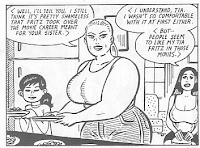Without consuming everything and with my own beaten path, the following are what I would call the highlights of Media Arts of this the first decade of the 21st Century. There are a number of easy explanations for art not seen here...I did not see it. Nevertheless, there is plenty scrutinizing opportunities available. So, let the fun begin.
Note: the bold items are from 2009 (some include other years).
1. Big Book of Frank, Jim Woodring (comic)
2. The Acme Novelty Library, Chris Ware (comic)
3. Queens Of The Stone Age-Rated R (album)
4. Love & Rockets, Los Hernandez Bro. (comic)
5. The Venture Bros. (tv)
6. Eightball: The Death Ray, Ice Haven, and David Boring by Daniel Clowes (comic)
7. Lost in Translation (film)
8. Teaching Visual Culture: Curriculum, Aesthetics, and the Social Life of Art by Kerry Freedman (text)
9. Asterios Polyp, David Mazzucchelli (comic)
10. Eagles Of Death Metal-Peace Love Death Metal (album)
11. The Royal Tenenbaums (film)
12. iPod/iPhone (tec)
13. Takashi Murakami ("fine art")
14. Jason’s Hey Wait!, Why are you Doing This?, I Killed Adolf Hitler (comic)
15. Pixar (films)
16. Shag ("fine art")
17. Freaks and Geeks (tv)
18. The Daily Show with John Stewart (tv)
19. Mad Men (tv)
20. The Adventures of Kavalier and Clay (novel)
21. Mario Galaxy (video game)
22. The Complete Calvin and Hobbs-Bill Watterson (comic)
23. From the Lower East Side to Hollywood: Jews in American Popular Culture by Paul Buhle (text)
24. The Comics Journal (magazine)
25. White with Foam, Mad Love (album)
26. Optic Nerve, Adrian Tomine (comic)
27. The Cheese Monkey-Chip Kidd (novel)
28. Krazy & Ignatz, George Herriman (comic)
29. Interpol-Our Love to Admire (album)
30. Facebook (tec)
31. Pixies (Live Music)
32. Humbug, Harvey Kurtzman et al. (comic)
33. Juno (film)
34. DC: The New Frontier, Darwyn Cooke (comic)
35. America’s Best Comics-Edited by Matt Madden and Jessica Able (comic)
36. An Inconvenient Truth (film)
37. Ghost World (film)
38. Carnival (tv)
39. Sabra Fields ("fine art")
40. McSweeny’s Quarterly No. 13 –Edited by Chris Ware (comic)
41. Blackalicious-Blazing Arrow (album)
42. Elf (film)
43. Justice League Unlimited (tv)
44. Cirque De Sole (live performance)
45. Wii (tec)
46. Robert C. Jackson ("fine art")
47. Tom Strong, Alan Moore & Chris Sprouse (comic)
48. It's Blitz!, Yeah Yeah Yeahs (album)
49. Weeds (tv)
50. Fantômas-The Director's Cut (album)
51. System Of A Down-Toxicity (album)
52. NPR (radio)
53. Tomahawk-Tomahawk (album)
54. Lord of the Rings (films)
55. MSNBC (tv)
56. Dan in Real Life (film)
57. Whip It! (film)
58. Judd Apatow’s Films (films)
59. The Complete Peanuts, Charles M. Schulz (comic)
60. Spider-Man II (films)
61. Jack Cole and Plastic Man –Art Spiegleman and Chipp Kidd (text)
62. Dillinger Escape Plan-Irony Is A Dead Scene (album)
63. O’Brother, Where Art Thou? (film)
64. Simpsons (tv/film)
65. Orbital-The Altogether (album)
66. Lost (tv)
67. Iron Man(film)
68. Promethea, Alan Moore & J. H. Williams III (comic)
69. Thursday Comedy Primetime on NBC (tv)
70. X-Men II (film)
71. Battlestar Galactica (tv)
72. Everything is Illuminated (film)
73. The Family Stone (film)
74. The Great Women Cartoonists-Trina Robbins (text)
75. Shepherd Farley ("fine art")
76. Fair Weather, Joe Matt (comic)
77. Gorillaz-Demon Days (album)
78. Star Trek (film)
79. George Sprott, 1894-1975, Seth (comic)
80. Sponge Bob Square Pants (tv)
81. Secret Chiefs 3-Book Of Horizons (album)
82. Big Love (tv)
83. Little Miss Sunshine (film)
84. The Fog of War (film)
85. Hellboy (film)
86. Fantomas-Melvin’s Big Band(Patton), Kid 606, Lucky Stars (live performance)
87. Doubt (film)
88. The Authority, Warren Ellis & Bryan Hitch (comic)
89. Milk (film)
90. The Powerpuff Girls (tv)
91. Avengers Forever, Kurt Busiek, Roger Sternand & Carlos Pacheco (comic)
92. V for Vendetta (film)
93. The Golem’s Mighty Swing, James Sturm (comic)
94. Stranger then Fiction (film)
95. Firecraker (film)
96. Bjork, Yeah Yeah Yeah’s (live performance)
97. Roketo (comic)
98. SNL (tv)
99. That ‘70’s Show (tv)
100. Munich (film)






























